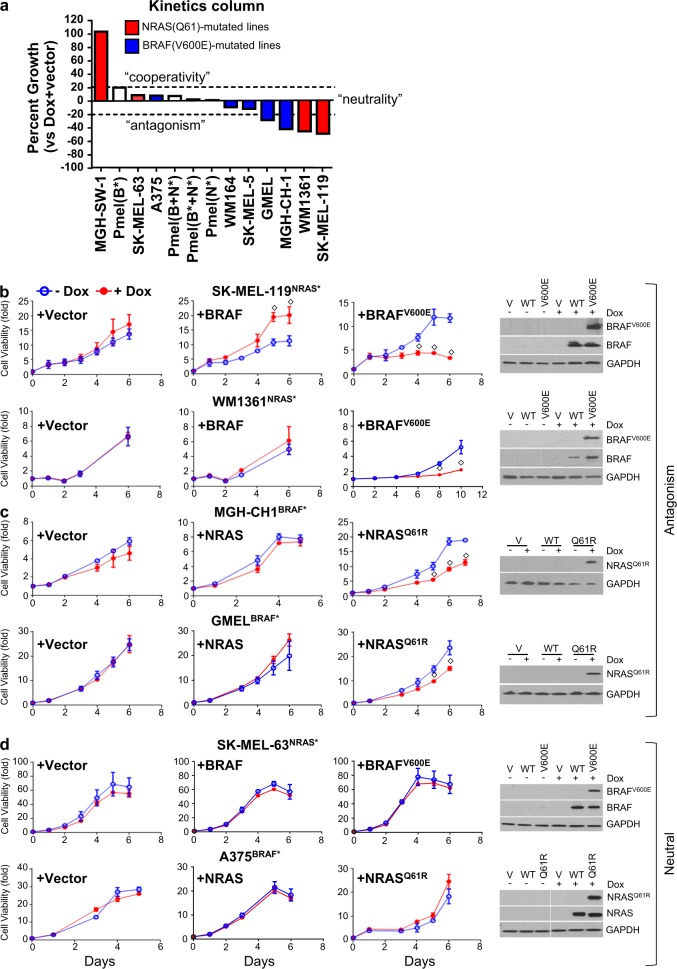Fig. 1.
Differential cell growth response upon rival oncogene expression. The rival oncogene was induced with doxycycline (50–100 ng/ml) and subjected for 6 days cell viability assays using cell-titer-glow reagent. a A panel of four isogeneic stable NRAS(Q61)/Tet-On BRAF(V600E) and five BRAF(V600E)/Tet-On-NRAS(Q61R) mutant cell lines and an immortalized primary human melanocyte line (Pmel) were assayed for cell viability at fifth day following rival oncogene induction with doxycycline. Cell lines showing antagonism such as b two NRAS(Q61R)/Tet-On-BRAF(V600E) and c two BRAF(V600E)/Tet-On-NRAS(Q61R). Cell lines showing cooperativity/neutral such as d one BRAF(V600E)/Tet-On-NRAS(Q61R) and one NRAS(Q61R)/Tet-On-BRAF(V600E). The protein expression was confirmed by western blotting. For each cell line, cell viability was performed independently more than three times in triplicates. Student’s t test, doxycycline vs. no-doxycycline, ◇p ≤ 0.05

